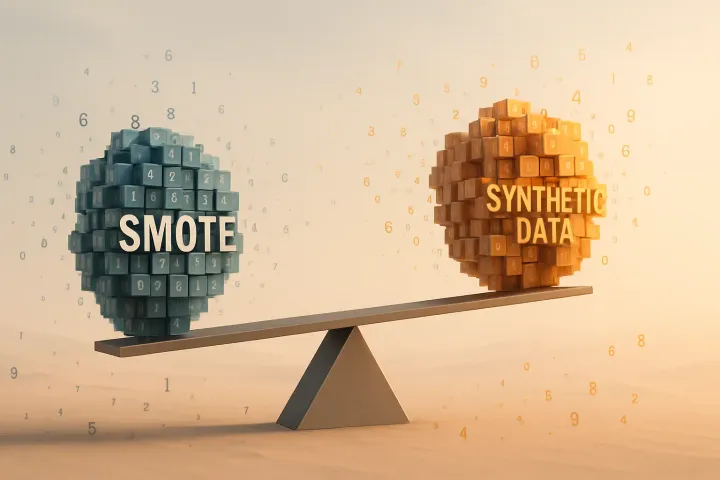Data Preparation: From Raw Data to Ready-to-Use Insights
Data preparation is crucial for gaining true insights because it ensures accuracy and consistency in the data, which are the foundations for any reliable analysis. Without proper cleaning and structuring, data can be misleading, leading to incorrect conclusions and decisions.

If you collect information at scale, you're probably pulling it from different places and in all sorts of formats. This means the data you get can be a bit all over the place and hard to make sense of right away.
But did you know that messy data can cost companies an average of $12.9 million? And that's not even the worst part. Using unorganized data can also lead to lost opportunities, disillusioned customers, and damaged reputation.
So, how do you transform raw information into insights that drive value? For this purpose, companies usually run data preparation. But what exactly is it, and why should you care? Jump into this article to learn more.
What is data preparation?
Amazon defines the preparation of data as a transformation of raw data into a format suitable for further processing. Gartner's data preparation definition suggests that this is an iterative-agile process aimed at examining, cleaning, transforming, and then merging raw information into curated datasets.
IBM distinguishes the automated data preparation process and describes it as a simplified way to get information ready for analysis. Within this process, you:
- Analyze your data points
- Identify fixes
- Screen out problematic or useless fields
- Derive new attributes
- Improve performance through advanced screening techniques.
Why is data preparation important for analytics?
You might be surprised, but data preparation is the least favorite task of 76% of data scientists. Still, investments in solutions to processing messy data continue to grow. That's because prepared and unprepared data can make a difference in what analytical results you get.
- Ever looked at raw data? Then you know that it's full of errors, inconsistencies, and irrelevant information. Preparing the data means you're making choices based on the real deal, not the clutter.
- If you're into machine learning, prepping your data means giving it a boost. When data scientists get polished data, they can whip up some spot-on ML models.
- Data preparation tools catch errors before any processing occurs. This proactive approach prevents potential issues down the line.
- When data is neat and tidy, it's like an open book, — easy for anyone to read. This means faster, smoother analysis without the headaches.
What are the data preparation process steps?
Abraham Lincoln once said, "If I had eight hours to chop down a tree, I’d spend the first six of them sharpening my axe." That's why it comes as no surprise that most data specialists claim that they spend 70% to 80% of their time preparing data.
So, what is done to the data in the preparation stage? Here are the common data preparation steps that will ensure you get actionable insights.
- Collection
- Profiling
- Cleaning
- Structuring
- Transformation & enrichment
- Visualization
1. Collection
Data collection, also known as data harvesting, is about gathering the right info to hit certain goals. And trust us, the better the info, the cooler the insights you get from it. So, what types of information you can collect:
- Quantitative data refers to things you can count (how many orders are placed on your website, the cost of a similar product/service at your competitors, and the age of your prospects).
- Qualitative data is more about characteristics or qualities (what do your customers say about your product?).
- Primary data means information collected firsthand for a specific purpose.
- Secondary data stands for the information someone has collected, and you're reusing it.
2. Profiling
Upon collecting the data, you've got to give it a thorough examination. You'll want to get a better idea of what it contains and what next steps of data preparation to take.
So, at this stage, you make sure the data is consistent, accurate, and free from anomalies.
3. Cleaning
The goal of data cleaning is to make your dataset as accurate as possible. Why should you care about this? Because data performance is directly related to how clean it is. For example, 25% of contact info records contain critical errors, which directly affect sales and deal closure.
The key steps to a clean dataset include:
- Remove irrelevant data
- Fix structural errors
- Fill out the missing data
- Standardize data entry
4. Structuring
Once you get clean data, the next step is to organize it. The process of collecting various types of data (both structured and unstructured) and then converting it into usable, meaningful information is known as data structuring. In other words, your goal is to organize data so that you can do what you want with it.
Usually, you have multiple methods to structure your vast amounts of data: linear and non-linear. While linear structures store data elements in a sequence, non-linear ones organize data in a hierarchical manner (like trees or graphs).
5. Transformation & enrichment
As you dive into the organization and preparation of raw data for data analysis, you should also pay attention to data transformation and enrichment. So, what are these notions about?
Data transformation refers to the process of tweaking the data format or values to make it fit better for analysis. The common ways to do this are through normalization, scaling, and encoding.
On the other side, data enrichment stands for enhancing collected data with information from external sources. Here is how it works. For example, a telecom company wants to tailor data plans based on how and where their subscribers use the internet. They've got their own set of basic user info, but they decide to learn more. They get insights from another company about popular apps in various areas and how much data those apps typically use. Then, they blend this new info with their own. Now, the company can paint a clearer picture of their subscribers' internet habits based on where they are.
6. Visualization
Instead of sifting through rows and columns of raw data, visuals (charts, graphs, and maps) help make sense of it all. Data visualization is especially handy when you're dealing with a mountain of complex data, and you want to quickly grasp what's going on. Harvard Business Review breaks down data visualization into four main types based on its purpose:
- Idea generation — helps see business operations or other aspects in a fresh light.
- Idea illustration — enables to represent an idea in a visual format.
- Everyday dataviz — assists with routine tasks and decisions.
- Visual discovery — allows exploring data visually to discover new insights, patterns, or anomalies.
Conclusion
So, preparing data for analysis is like laying the foundation for a house—that's something you can't skip (if you would like to have accurate results, of course). Exclude one of the steps from the data preparation flow, and you might end up making wrong decisions based on faulty data. And just the other way round. When the data is neatly laid out and trustworthy, it's easier to ask the right questions and get meaningful answers.
Remember the saying, "You get out what you put in"? It's the same with data. If you put in the effort to prepare it well, the results will be top-notch.




